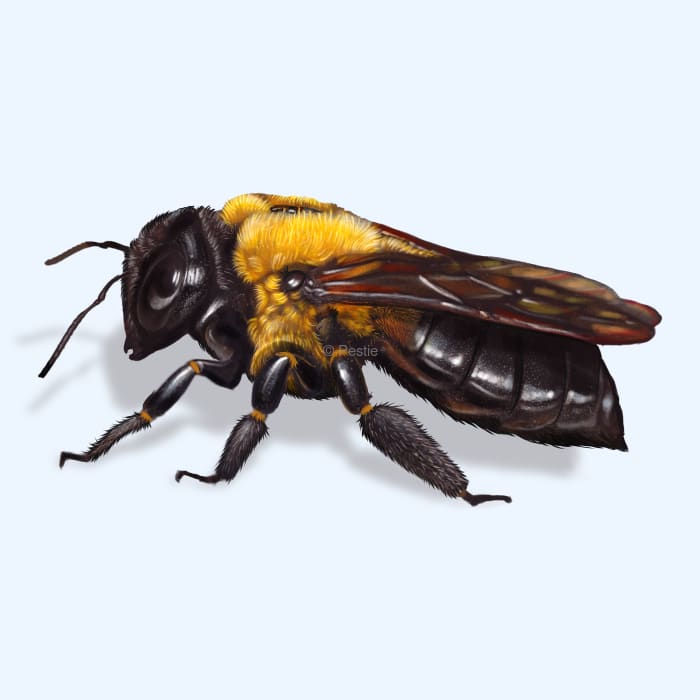How to identify and get rid of carpenter bees

Carpenter bees: To bee or not to bee in your home
Carpenter bees are a complicated problem to have. On the one hand, they are bees that look just like bumble bees, and you’ve been told to save the bees, not kill them. On the other hand, they are making holes in all of your wooden structures. Whether that’s a deck, posts of your porch, or the timber framing of your home, they can quickly become a nuisance.
Unlike termites that eat wood, carpenter bees bore a hole into the wood to build a nest to raise their larvae. These bees are active from early spring when they emerge to mate and find nesting sites, which makes early detection key. While they’re not looking to sting unless provoked, their woodworking can cause significant damage over time.
How to identify carpenter bees
Carpenter bees are easy to spot due to their size and their robust shape. They often have a shiny black abdomen and a yellow thorax, making them look somewhat like bumblebees but with a less hairy, smoother abdomen.
The males, which can’t sting, will hover near their nests, warding off any flying insects that get too close. Signs of an infestation include round, smooth holes in wood and piles of sawdust beneath these entry points.
How big are carpenter bees?
They typically range from 1/2 to 1 inch long.
What other pest looks like a carpenter bee?
Bumble bees and carpenter bees are often mixed up. Just remember that carpenter bees nest in wood and have a shiny abdomen, whereas bumble bees nest in the ground and are fuzzy all over.
Where do carpenter bees live?
You can find carpenter bees throughout the US, especially in areas with abundant wood structures. Around your home, they might be hanging out around eaves, decks, fence posts, and other wood structures.
How to get rid of carpenter bees
Getting rid of carpenter bees can be a bit tricky for some people because they feel like they are doing something wrong when they want to kill them. Fortunately, there are a few ways you can deter them from drilling holes in your wood structures and prevent them from hanging around.
- Block Holes: After bees have left, seal their holes with steel wool and then wood putty or caulk to prevent re-entry.
- Physical Barriers: Apply varnish or paint to wood surfaces, as carpenter bees prefer untreated wood.
- Replace damaged wood: Any wood that has significant damage should be replaced so the bees stop using the same nesting site year after year.
Additionally, you can use an insect barrier spray to prevent carpenter bees from nesting in or around your home. Pestie offers a pro-grade DIY solution that you can apply in just a few minutes.
Treat carpenter bees with Pestie
If you're still having trouble keeping carpenter bees away, the best option is to use a pro-grade, effective pest control solution like Pestie.
Pestie is a do-it-yourself pest control solution that's specially designed to keep carpenter bees and other pests away from your home.
With Pestie, you can rest easy knowing that your living space is protected and free of creepy crawlies. And the best part? It's designed for people, pets, and the planet, so you can say goodbye to harsh chemicals and hello to peace of mind!
- Save hundreds compared to traditional annual pest plans
- People, pet, and planet-friendly
- Pro-grade customized formulas
Quick facts
- Scientific name
Xylocopa
- Other common names
Bore Bees
- Colors
Black and yellow
- Life span
1 year
- Diet
Nectar and pollen
How dangerous are Carpenter Bees?
Low danger risk
Females can sting, although it is rare. Stings only occur when the bees are handled or provoked. Carpenter bee stings are much like honey bee stings.
Carpenter bees are important pollinators. Because of their short mouthparts, they only visit shallow flowers. However, some species have been known to “rob” nectar from flowers. They do this by cutting a slit in the flower, bypassing the pollen and drinking the nectar. This stops the flower from getting pollinated and forming fruit or seed.








